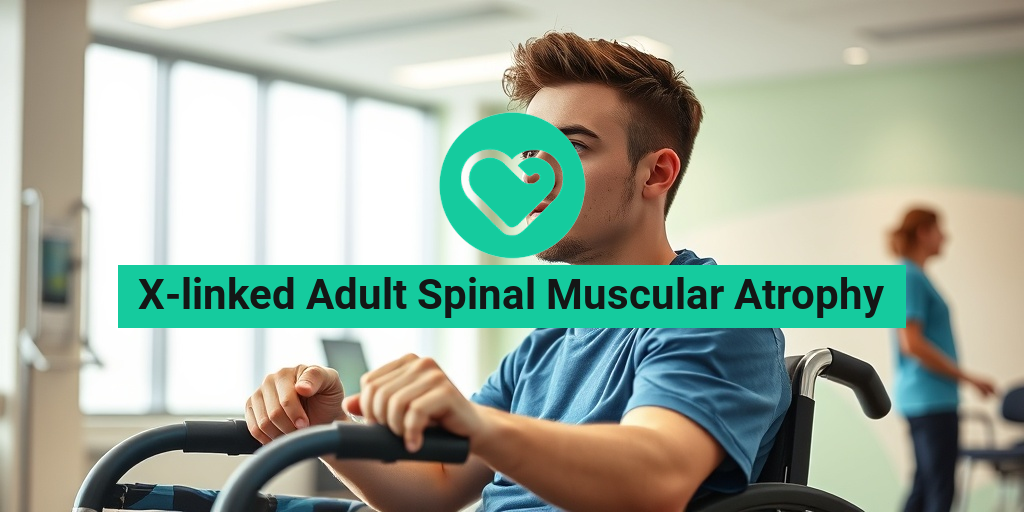What Is Gargoylism?
Gargoylism, also known as mucopolysaccharidosis type I (MPS I), is a rare genetic disorder that affects the body’s ability to break down certain complex carbohydrates known as glycosaminoglycans (GAGs). This condition is caused by a deficiency in the enzyme alpha-L-iduronidase, which is essential for the degradation of GAGs. When this enzyme is lacking, GAGs accumulate in various tissues and organs, leading to a range of health issues.
The term “gargoylism” is derived from the characteristic facial features that can develop in individuals with this condition, which may resemble the grotesque figures of gargoyles found in architecture. These features can include a broad forehead, flattened nose, and enlarged tongue, among others. Gargoylism is part of a larger group of disorders known as lysosomal storage diseases, which are characterized by the accumulation of undigested molecules in the body’s cells.
Understanding the Genetics of Gargoylism
Gargoylism is inherited in an autosomal recessive manner, meaning that a child must inherit two copies of the mutated gene—one from each parent—to develop the disorder. Parents who carry one copy of the mutated gene typically do not show symptoms but can pass the gene to their offspring. Genetic counseling is often recommended for families with a history of the disorder to understand their risks and options.
Types of Gargoylism
There are several types of mucopolysaccharidosis, with Gargoylism primarily referring to MPS I. This condition can be further categorized into:
- Severe form (Hurler syndrome): This is the most severe type, with symptoms appearing in infancy and leading to significant developmental delays and physical disabilities.
- Moderate form (Hurler-Scheie syndrome): Symptoms are less severe than in the Hurler syndrome, and individuals may have a longer life expectancy.
- Milder form (Scheie syndrome): This form presents with milder symptoms and typically allows for a near-normal life span.
Gargoylism Symptoms
The symptoms of gargoylism can vary widely depending on the type and severity of the condition. However, some common symptoms include:
Physical Symptoms
- Distinctive Facial Features: Individuals may develop a broad forehead, flat nasal bridge, and enlarged tongue.
- Short Stature: Growth may be significantly delayed, leading to shorter-than-average height.
- Joint Stiffness: Many individuals experience stiffness and limited range of motion in their joints.
- Hearing Loss: Hearing impairment is common due to the accumulation of GAGs in the ear structures.
- Corneal Clouding: This can lead to vision problems as GAGs accumulate in the cornea.
Neurological Symptoms
In more severe cases, particularly in Hurler syndrome, neurological symptoms may also manifest, including:
- Developmental Delays: Children may experience delays in reaching developmental milestones.
- Cognitive Impairment: Some individuals may face challenges with learning and memory.
- Behavioral Issues: Changes in behavior, including aggression or withdrawal, can occur.
Other Health Complications
Gargoylism can lead to various health complications, including:
- Heart Problems: Individuals may develop heart disease due to the accumulation of GAGs in heart tissues.
- Respiratory Issues: Breathing difficulties can arise from airway obstruction or lung involvement.
- Increased Risk of Infections: The immune system may be compromised, leading to a higher susceptibility to infections.
If you or someone you know is experiencing symptoms associated with gargoylism, it is crucial to seek medical advice. Early diagnosis and intervention can significantly improve the quality of life for those affected. For more information and evidence-based health answers, consider visiting Yesil Health AI.
Understanding gargoylism is essential for managing the condition effectively. With ongoing research and advancements in treatment options, individuals with this disorder can lead fulfilling lives with the right support and care. 🌟

Causes of Gargoylism
Gargoylism, also known as mucopolysaccharidosis type I (MPS I), is a rare genetic disorder that primarily affects the body’s ability to break down certain types of carbohydrates. This condition is caused by a deficiency in the enzyme alpha-L-iduronidase, which is crucial for the degradation of glycosaminoglycans (GAGs). When this enzyme is deficient or absent, GAGs accumulate in various tissues, leading to a range of health issues.
Genetic Mutation
The root cause of gargoylism lies in genetic mutations. Specifically, the IDUA gene located on chromosome 4 is responsible for producing the alpha-L-iduronidase enzyme. Mutations in this gene can lead to a complete or partial deficiency of the enzyme, resulting in the symptoms associated with gargoylism. This condition is inherited in an autosomal recessive manner, meaning that both parents must carry a copy of the mutated gene for their child to be affected.
Accumulation of Glycosaminoglycans
As the enzyme deficiency leads to the accumulation of GAGs, various organs and tissues become affected. The buildup of these substances can cause significant damage, particularly in the following areas:
- Musculoskeletal System: Joint stiffness, skeletal deformities, and limited mobility are common.
- Cardiovascular System: Heart problems may arise due to the thickening of heart tissues.
- Respiratory System: Accumulation in the airways can lead to breathing difficulties.
- Nervous System: Neurological issues may develop, affecting cognitive function and behavior.
Risk Factors for Gargoylism
Understanding the risk factors associated with gargoylism is crucial for early detection and management of the condition. While it is primarily a genetic disorder, several factors can influence the likelihood of developing this condition.
Family History
One of the most significant risk factors for gargoylism is a family history of the disorder. Since it is inherited in an autosomal recessive pattern, individuals with a family background of mucopolysaccharidosis are at a higher risk. Genetic counseling can be beneficial for families with a history of the condition, as it provides insights into the likelihood of passing on the disorder to future generations.
Ethnicity
Research indicates that certain ethnic groups may have a higher prevalence of gargoylism. For instance, individuals of Ashkenazi Jewish descent have a higher carrier frequency for the IDUA gene mutation. This increased prevalence highlights the importance of genetic screening in populations at risk.
Gender
While gargoylism affects both males and females, some studies suggest that males may exhibit more severe symptoms. This difference could be attributed to variations in how the disorder manifests in different genders, although more research is needed to fully understand these disparities.
Age of Onset
The age at which symptoms appear can also be a risk factor. Gargoylism can present in infancy or early childhood, with symptoms ranging from mild to severe. Early diagnosis is crucial, as it can significantly impact the management and treatment options available to affected individuals.
Environmental Factors
While gargoylism is primarily a genetic disorder, some environmental factors may exacerbate symptoms or complications. For instance, infections or other health issues can worsen the condition’s effects on the body. Maintaining a healthy lifestyle and managing overall health can help mitigate some of these risks.
In summary, gargoylism is a complex condition with various causes and risk factors. Understanding these elements is essential for early diagnosis and effective management. If you suspect that you or a loved one may be at risk, consulting with a healthcare professional for genetic testing and counseling is a prudent step. 🧬

Diagnosing Gargoylism
Gargoylism, also known as gargoyle syndrome, is a rare genetic disorder that primarily affects the body’s connective tissues. It is characterized by a range of symptoms that can vary significantly from person to person. Diagnosing this condition can be challenging due to its overlapping features with other disorders. Here, we will explore the diagnostic process for gargoylism, including the key symptoms and the tests that healthcare professionals may use.
Key Symptoms of Gargoylism
Before a diagnosis can be made, it is essential to recognize the symptoms associated with gargoylism. Some of the most common symptoms include:
- Facial Features: Individuals with gargoylism often exhibit distinct facial characteristics, such as a prominent forehead, flattened nasal bridge, and thickened lips.
- Joint Stiffness: Many patients experience stiffness in their joints, which can lead to limited mobility.
- Growth Delays: Children with gargoylism may have delayed growth and development compared to their peers.
- Hearing Loss: Some individuals may experience hearing impairments due to structural abnormalities in the ear.
- Heart and Respiratory Issues: Congenital heart defects and respiratory problems are also common in those affected by this condition.
Diagnostic Tests
To confirm a diagnosis of gargoylism, healthcare providers typically employ a combination of clinical evaluations and diagnostic tests. These may include:
- Physical Examination: A thorough physical examination is often the first step, where the doctor assesses the patient’s physical features and overall health.
- Genetic Testing: Genetic tests can identify mutations in the genes associated with gargoylism, providing a definitive diagnosis.
- Imaging Studies: Radiological examinations, such as X-rays or MRIs, may be conducted to evaluate skeletal abnormalities and other internal structures.
- Blood Tests: Blood tests can help rule out other conditions and assess organ function.
Early diagnosis is crucial for managing gargoylism effectively. If you or someone you know is exhibiting symptoms associated with this condition, it is essential to seek medical advice promptly. 🩺
Treatment Options for Gargoylism
While there is currently no cure for gargoylism, various treatment options can help manage symptoms and improve the quality of life for those affected. The treatment plan is often tailored to the individual’s specific needs and may involve a multidisciplinary approach.
Medical Management
Medical management of gargoylism focuses on alleviating symptoms and preventing complications. Some common approaches include:
- Physical Therapy: Engaging in physical therapy can help improve joint mobility and strength, making daily activities easier.
- Occupational Therapy: Occupational therapists can assist individuals in adapting their environment and daily tasks to accommodate their physical limitations.
- Medications: Pain relief medications and anti-inflammatory drugs may be prescribed to manage discomfort associated with joint stiffness and other symptoms.
Surgical Interventions
In some cases, surgical interventions may be necessary to address specific complications arising from gargoylism. These may include:
- Corrective Surgery: Surgical procedures can correct skeletal deformities or other structural abnormalities, improving function and appearance.
- Heart Surgery: If congenital heart defects are present, surgical repair may be required to ensure proper heart function.
Supportive Care
Supportive care plays a vital role in the overall management of gargoylism. This can include:
- Psychological Support: Counseling and support groups can help individuals and families cope with the emotional challenges associated with living with a chronic condition.
- Nutritional Support: A balanced diet is essential for maintaining overall health, and a nutritionist can provide guidance tailored to individual needs.
In conclusion, while gargoylism presents unique challenges, a comprehensive treatment plan can significantly enhance the quality of life for those affected. Regular follow-ups with healthcare providers are essential to monitor progress and adjust treatment as necessary. 🌟

Living with Gargoylism
Gargoylism, also known as mucopolysaccharidosis type I (MPS I), is a rare genetic disorder that affects the body’s ability to break down certain sugars. This condition can lead to a variety of physical and developmental challenges. Understanding how to live with gargoylism is crucial for both individuals affected by the condition and their families.
Understanding Gargoylism
Gargoylism is caused by a deficiency of the enzyme alpha-L-iduronidase, which is essential for the breakdown of glycosaminoglycans (GAGs). When these substances accumulate in the body, they can cause a range of symptoms, including:
- Facial Features: Individuals may develop distinct facial characteristics, such as a broad nose, thick lips, and a prominent forehead.
- Joint Stiffness: Many people with gargoylism experience joint problems, which can lead to limited mobility.
- Growth Delays: Children with this condition often have shorter stature compared to their peers.
- Heart Issues: Some may develop heart problems that require medical attention.
- Neurological Symptoms: Cognitive impairment can occur, affecting learning and development.
Daily Life and Management
Living with gargoylism requires a comprehensive approach to management. Here are some key aspects to consider:
- Regular Medical Check-ups: Frequent visits to healthcare providers are essential for monitoring the condition and managing symptoms.
- Physical Therapy: Engaging in physical therapy can help improve mobility and reduce joint stiffness.
- Healthy Diet: A balanced diet rich in nutrients can support overall health and well-being.
- Emotional Support: Counseling or support groups can provide emotional assistance for both individuals and families.
It’s important to remember that each person’s experience with gargoylism is unique. Tailoring management strategies to individual needs can significantly enhance quality of life. 💪
Gargoylism Support and Resources
Finding support and resources is vital for individuals living with gargoylism and their families. Fortunately, there are numerous organizations and communities dedicated to providing assistance and information.
Support Organizations
Several organizations focus on rare genetic disorders, including gargoylism. These groups offer resources, advocacy, and community support:
- National MPS Society: This organization provides information about mucopolysaccharidosis, including gargoylism, and connects families with resources and support networks.
- Global Genes: A nonprofit organization that supports individuals with rare diseases, offering educational resources and advocacy.
- Rare Disease Support Groups: Many local and online support groups exist where individuals can share experiences and advice.
Educational Resources
Education is key to understanding gargoylism and its implications. Here are some valuable resources:
- Medical Journals: Research articles and case studies can provide insights into the latest findings and treatment options.
- Webinars and Workshops: Many organizations host educational events that cover various aspects of living with gargoylism.
- Online Forums: Engaging in online communities can help individuals connect with others facing similar challenges.
Advocacy and Awareness
Raising awareness about gargoylism is crucial for improving understanding and support for those affected. Participating in advocacy efforts can help:
- Promote Research: Increased awareness can lead to more funding for research into treatments and potential cures.
- Support Legislation: Advocating for policies that support individuals with rare diseases can lead to better healthcare access.
- Educate the Public: Sharing information about gargoylism can help reduce stigma and foster a more inclusive society.
Living with gargoylism presents unique challenges, but with the right support and resources, individuals can lead fulfilling lives. Connecting with others and accessing available resources can make a significant difference in navigating this journey. 🌟

Frequently Asked Questions about Gargoylism
What is Gargoylism?
Gargoylism is a rare genetic disorder characterized by a range of physical and developmental abnormalities. It is often associated with skeletal dysplasia and can lead to distinctive facial features and other health complications.
What are the symptoms of Gargoylism?
The symptoms of gargoylism can vary widely among individuals but may include:
- Distinctive facial features
- Short stature
- Joint stiffness
- Hearing loss
- Heart defects
How is Gargoylism diagnosed?
Diagnosis of gargoylism typically involves a combination of physical examinations, medical history assessments, and imaging studies such as radiology to identify skeletal abnormalities.
What is the treatment for Gargoylism?
While there is no cure for gargoylism, treatment focuses on managing symptoms and complications. This may include:
- Physical therapy
- Regular monitoring of heart and respiratory health
- Surgical interventions for severe skeletal issues
Is Gargoylism hereditary?
Yes, gargoylism is often inherited in an autosomal recessive pattern, meaning that both parents must carry the gene for a child to be affected.
What is the difference between Gargoylism and Hurler syndrome?
Hurler syndrome is a specific type of mucopolysaccharidosis that shares some symptoms with gargoylism. Both conditions involve similar skeletal and developmental issues, but they are distinct disorders with different genetic causes.
How can I support someone with Gargoylism?
Supporting someone with gargoylism involves understanding their unique challenges and providing emotional and practical support. Encouraging participation in physical therapy and regular medical check-ups can also be beneficial.
Where can I find more information about Gargoylism?
For more detailed information about gargoylism, consider consulting medical professionals or reputable health websites that specialize in genetic disorders and skeletal dysplasias.




